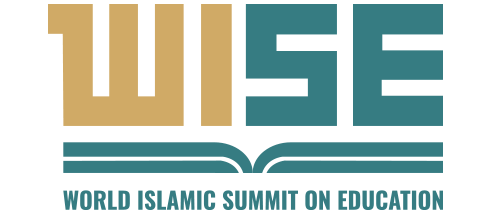As educators, we understand the importance of continuous learning and growth. Reading books is an excellent way to expand our knowledge and challenge our perspectives. In the field of Islamic and Arabic education, there are countless great books that can inspire us and help us develop new ideas. One such book is Medieval Muslim Philosophers and Intercultural Communication: Towards a Dialogical Paradigm in Education by Wisam Kh. Abdul-Jabbar.
This book explores the works of medieval Muslim philosophers who were interested in intercultural encounters and receptive to foreign thought. Through their philosophies, they advanced intercultural learning and contributed to curriculum theorizing. The book provides examples of how each philosopher engaged with intercultural encounters and how their ideas can be used to infuse intercultural ethics and practices into our teaching. The book also encourages flexibility, tolerance, deliberation, and plurality, which are essential values for Muslim communities’ interactions and identity construction. We believe that this book can be a valuable resource for Muslim teachers who are interested in promoting intercultural education and developing a dialogical paradigm for Islamic and Arabic education.
We encourage you to read Medieval Muslim Philosophers and Intercultural Communication: Towards a Dialogical Paradigm in Education and engage in introspection and dialogue to flourish new ideas and perspectives. Let’s continue to learn and grow together as educators and individuals.
Medieval Muslim Philosophers and Intercultural Communication: Towards a Dialogical Paradigm in Education by Wisam Kh. Abdul-Jabbar is a book that examines the works of medieval Muslim philosophers who were interested in intercultural encounters and receptive to foreign thought. The book is grounded in intercultural communication and serves as a dialogical model for Islamic and Arabic education. The philosophers studied in this project were instructors, tutors, or teachers, such as Al-Kindi, Al-Farabi, Al-Ghazali, and Averroes, whose philosophical contributions directly or indirectly advanced intercultural learning.
The book describes and provides examples of how each of these philosophers engaged with intercultural encounters, and asks how their philosophies can contribute to infusing intercultural ethics and practices into curriculum theorizing. Medieval Muslim Philosophers and Intercultural Communication: Towards a Dialogical Paradigm in Education explores selected works of medieval Muslim philosophers from an intercultural perspective to formulate a dialogical paradigm that informs and enriches Muslim education. It frames intercultural education as a catalyst to guide Muslim communities’ interactions and identity construction, encouraging flexibility, tolerance, deliberation, and plurality. The book bridges the gap between medieval tradition and modern thought by promoting interdisciplinary connections and redrawing intercultural boundaries outside disciplinary limits.
The book demonstrates that the dialogical domain that guides intercultural contact becomes a curriculum-oriented structure with Al-Kindi, a tripartite pedagogical model with Al-Fārābī, a sojourner experience with Al-Ghazali, and a deliberative pedagogy of alternatives with Averroes. Al-Kindi’s philosophy helps to formulate a curriculum theorizing and the intercultural Minhaj. Al-Fārābī’s philosophy contributes to a tripartite model of the dialogical curriculum, while Al-Ghazali’s Rihla, or sojourn, conceptualizes an interdisciplinary and intercultural journey of epistemic crisis. Finally, Averroes’ philosophy offers a deliberative pedagogy of intercultural education.
The book speaks to readers interested in the potential of dialogue in education, intercultural communication, and Islamic thought research. It is crucial in bridging the gap between medieval tradition and modern thought by promoting interdisciplinary connections and redrawing intercultural boundaries outside disciplinary limits. The book is a significant contribution to the field of Islamic and Arabic education, which can inform and enrich Muslim education and encourage flexibility, tolerance, deliberation, and plurality.
The book is organized into seven chapters, starting with an introduction to the intercultural, educational, and interdisciplinary borderlines. The first chapter proposes three premises for the book project, which are intercultural communication and the meaning of culture, dialogue at the borderline, and intercultural communication, interdisciplinarity, and the crisis of disciplinarity. The second chapter explores intercultural encounters, discord, and discovery in medieval times and the translation movement, the House of Wisdom, and Kalam. The third chapter introduces the dialogical paradigm as a paradigm for the intercultural context, driven by the dialogic, acting dialogically, and a dialectical shift from debate to dialogue.
The fourth chapter focuses on Al-Kindi’s philosophy on education and curriculum theorizing and the intercultural Minhaj. The fifth chapter discusses Al-Fārābī’s philosophy and his contribution to a tripartite model of the dialogical curriculum. The sixth chapter examines Al-Ghazali’s Rihla as a sojourner’s deliverer from error and an interdisciplinary and intercultural journey of epistemic crisis. Finally, the seventh chapter presents Averroes’ philosophy, the Averroesian curriculum, and the pedagogy of deliberation.
In conclusion, Medieval Muslim Philosophers and Intercultural Communication: Towards a Dialogical Paradigm in Education is a significant contribution to the field of Islamic and Arabic education, which can inform and enrich Muslim education and encourage flexibility, tolerance, deliberation, and plurality. The book is grounded in intercultural communication and serves as a dialogical model for Islamic and Arabic education. It bridges the gap between medieval tradition and modern thought by promoting interdisciplinary connections and redrawing intercultural boundaries outside disciplinary limits. The book is organized into seven chapters, each discussing the philosophy of a medieval Muslim philosopher and their contribution to intercultural education. The book is a must-read for anyone interested in the potential of dialogue in education, intercultural communication, and Islamic thought research.

